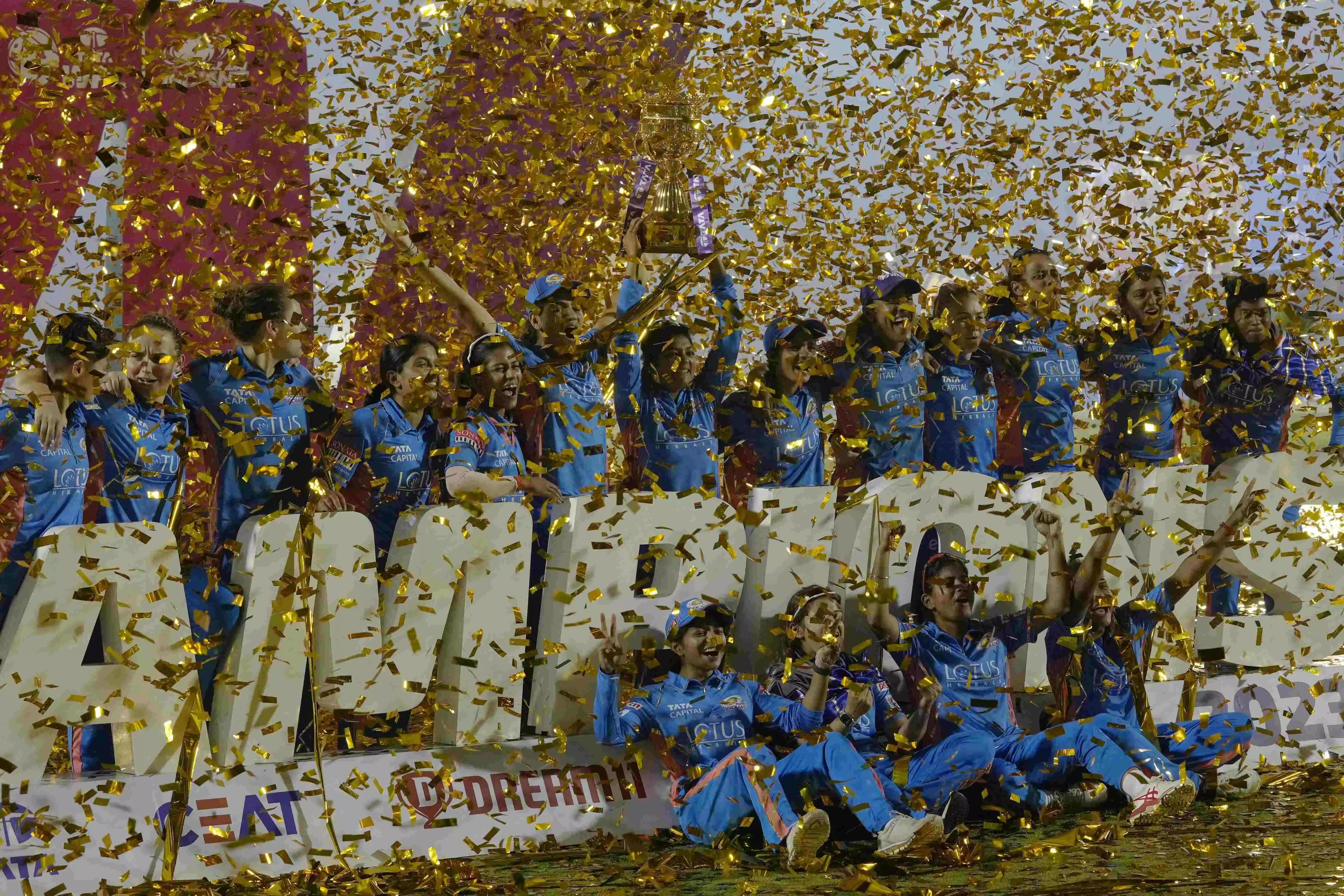A big boost

The Women’s Premier League (WPL) final between Mumbai Indians and Delhi Capitals was a historic moment, as it would cap the inaugural session of the long-overdue league tournament. But for Harmanpreet Kaur, perhaps, it was more than that. It was a moment of redemption. As coincidence would have it, opposite to her was the mighty Meg Lanning who, as the Australian captain, has kept the Indian skipper from laying her hands on coveted trophies on multiple occasions. Despite giving tough competition each time, Harmanpreet would fail to cover the last mile. But this time, though as a league team captain, Harmanpreet’s fortune did not elude her, and Meg Lanning couldn’t manage to stay in her way. What the victory meant to the Mumbai Indians skipper was well reflected in her raw and spontaneous celebration, and in the smile of contentment that had eluded her for far too long. The ending to the almost month-long tournament appeared apt and fulfilling. It involved breaking barriers and stigmas, something which Indian women’s cricket needs the most at this juncture. However, the WPL saga extends much beyond the story of Mumbai Indians and Harmanpreet Kaur. It has given a never-before opportunity to young and uncapped players, as also to veteran domestic players knocking on the doors of popular cricket for due recognition. 27-year-old domestic cricketer Saika Ishaque is a shining example of this. Saika, thanks to her failure to grab a single wicket in the final game, fell just one wicket behind her teammate Hayley Matthews — the purple cap winner. Having dismissed the most popular batswomen of the world in the inaugural WPL season, Saika has undeniably left her mark in the world of celebrated cricket, improving her chances to play for the Indian team. At the same time, Jasia Akhtar — a 34-year-old domestic cricketer from Kashmir — was elated to be exposed to the likes of Meg Lanning and others in the Delhi Capitals camp. Thanks to Delhi Capitals’ ostensible inertia against including uncapped and domestic players in the playing eleven, Jasia couldn’t get a chance to perform on the ground, but new avenues have certainly opened for her. Numerous such stories are waiting to be told, heard and cherished. If it were not for the WPL, where else would one expect to see Young Turks like Titas Sadhu, Parshavi Chopra, Kanika Ahuja, Anjali Sarvani and Shreyanka Patil, among others, proving their mettle? Getting a chance to play before a global audience is one big part of the opportunity that WPL offers. Allowing the young, and even experienced players, a chance to mingle with the best cricketing talents from across the world is another crucial part. Over the past couple of years, when it was still uncertain how the new Indian team would do without the blessed shadow of Mithali Raj and Jhulan Goswami, the women in blue have shown that there is no dearth of talent, skill or determination. The U19 T20 World Cup win further consolidated the conviction that the future of Indian women’s cricket will shine bright for decades to come. The exposure that WPL offers will certainly plug the small gap of competitiveness, that mindset problem of just falling short by a margin. The level of enrichment that the Indian Premier League has brought to men’s cricket is no mystery. It has made the world of cricket beautiful and more competitive. It is heartening to see that WPL is showing the same signs. One can feel hopeful about the road to parity in the world of cricket. The market that eluded women’s cricket in India is now here and could be a driver of parity. The words of ICC chairman Greg Barclay that “there is no reason for the two parts of the game, men and women, to be viewed as different” ignites hope. The Board of Control for Cricket in India (BCCI) deserves applause for the successful completion of the league tournament. The WPL is now set to expand the ambit of women’s cricket in India. We can now afford to look forward to a future where Harmanpreet Kaur falling short of the crease would not necessarily cost a trophy — the WPL final was an example in case.



